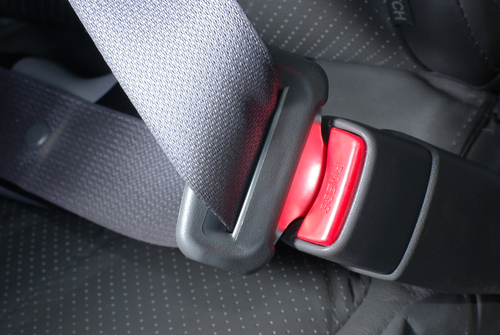How to Pass a Truck Safely

How to Pass a Truck Safely
All drivers will ultimately have to pass a truck, whether on a single road, or a highway at some point. However, passing a truck is different to passing a car and accidents can easily happen. Data from the Australian government’s Bureau of Infrastructure, Transport and Regional Economics, or BITRE, show that 185 people were killed in 168 fatal crashes involving heavy trucks in 2017 .
These road mishaps, as road safety advocate Rod Hannerfy noted in 2012 to ABC are always reported as “truck accidents”, implying that the truck or driver was responsible. A truckie by profession, Hannerfy believed that 80% of accidents involving trucks were in fact caused by the car driver, arguing that car drivers: “simply don’t understand how the size and weight of a truck affects the way they handle on the road”.
It is thus imperative that drivers learn how to share Australia’s roads with trucks.One important driving skill every driver should learn early, and master quickly, is passing a truck safely. It is vital that they understand that this is not the same as passing a car or a like-sized vehicle. There is a tried-and-tested approach to decide whether you should pass a truck. To this end, My Licence recommends that you ask yourself these questions first:
- What will I achieve?
- What are the risks?
- Is passing both safe and legal?
- How far is the next overtaking lane?
- How long is the truck?
- How long will it take to overtake this truck?
- Can I see if there is oncoming traffic?
Once you have determined that you can execute the passing safely, you can follow these pointers:
1. Stay out of the truck’s blind spots. As we have explained before in ‘Common Mistakes People Make When Driving on the Road’, many still fail to follow this rule.
A truck’s blind spots are as follows:
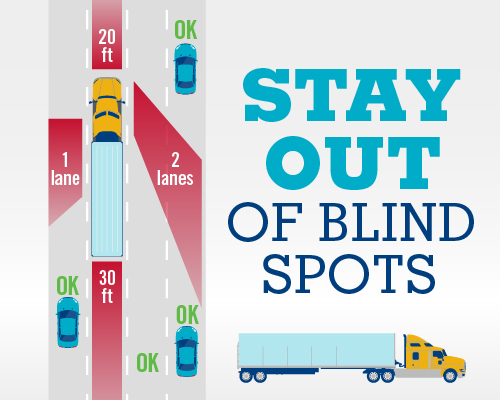
Also, if you can’t see the driver in the truck’s side mirror, that means he probably can’t see you either.
2. When you see the driver in the side mirror that means you’re in position to pass.
3. Signal clearly, then manoeuvre into the left lane.
4. Accelerate so you can get past the truck safely and promptly.
5. Check in your rear-view mirror to see if the truck is visible. Once it is, you can then pull in front. Specifically, make sure you see both the trucks headlights. Remember to give a truck extra space, too.
There is good news though. Barring unforeseen hindrances, driver fatigue could soon be a thing of the past as the Australian government is on the cusp of mandating the use of Electronic Work Diaries (EWD).
This follows the lead set by the U.S. Federal Motor Carrier Safety Administration which last year required fleet operators to install Electronic Logging Devices (ELD) in their vehicles. Fleetmatics explain that ELDs automatically record the truck driver’s work and rest times, thereby eliminating instances of drivers remaining behind the wheel if they have exceeded their allotted work hours. The EWD will work in the same way as the ELD. The only difference is that EWDs are voluntary. Hopefully in the near future the majority of trucks with have EWDs, and the risk of truck drivers overdriving could be eliminated.
Ultimately, roads will never be 100% safe, and both car and truck drivers must do their part to make travelling by road safer. For learner drivers, if we all do our part and learn the correct method to pass a truck, we can certainly minimise accidents.
Article only for the use of Easterndrivingschool.com.au
Stop Sign

Giving way to vehicles at intersections
Stop or Give Way signs or lines at an
intersection
After stopping at a Stop sign or line, or
when facing a Give Way sign or line at
an intersection, you must give way to
any vehicle in, entering or approaching
the intersection except:
• a vehicle making a U-turn
• a vehicle turning left using a
slip lane
• an oncoming vehicle turning right if
that vehicle is also facing a Stop or
The Driving Instructor

A driving instructor must have.
– Excellent driving record.
– Thorough knowledge of road law and its interpretation.
– An acute awareness of all surroundings.
– The ability to recognise hazards.
– The ability to communicate effectively with a broad range of people.
– The decision making skills to enhance safety.
– The experience and maturity to stay calm and measured in difficult situations
– The instructor must also have infinite patience and understanding with learner drivers and other road users.
You may have all of the above but you must then have the following qualification, reports and checks to obtain a Driving Instructor Authority.
– Certificate 1V in Transport.
– And the following reports and checks
– State Police Certificate issued in the last six months
– Medical certificate {Assessment of Fitness to Drive}
– Vision Acuteness Certificate
– Working with children check and registration so as you can legally work with children under eighteen years of age.
Nervous Drivers Are Our Speciality

Nervous Drivers Are Our Specialty
A great driver is a confident driver, but confidence comes with experience, and experience comes with time. Fortunately, Eastern Suburbs Driving School specialises in helping nervous drivers put in the time, gain the experience and develop the skills necessary to achieve that confidence.
We make it our mission to ensure that those who are looking for driving lessons in Melbourne, but who are also experiencing a few nerves and jitters, are not put off by this and can achieve their goal of becoming a confident and skillful driver.
How We Can Help
Anyone who is learning a new skill is going to experience a few nerves at some point, and this is only natural. Understandably, the nerves associated with learning to drive can be a little more intense than usual.
Those early driving experiences can be incredibly overwhelming and nerve-wracking, and there are many reasons why novice drivers feel nervous when getting behind the wheel. We’ve outlined a few of the most commons ones below, along with some accompanying information about how Eastern Suburbs Driving School can help you to turn those nerves in energy for positive action.
No Driving Experience = No Confidence
Our instructors are not only highly trained in the art of driving tuition, but also have excellent interpersonal skills. Empathy, patience and friendliness are all key characteristics of a good teacher in any field, and driving is certainly no exception. Because of this, our instructors will be able to coach you competently and with warmth, gently giving you the confidence you need to drive effectively.
The Open Road Is a Scary Place
To a non-driver or a relative novice, high levels of traffic and complicated interchanges and junctions can make the process of driving a scary and overwhelming one. Our team take the fear out of driving by fostering confidence and self-belief in novice learners, helping them progress quickly. Overcoming fear is all about knowing that you have the tools to deal with any problems you might face; Eastern Suburbs Driving School can give you those tools.
There Is So Much to Learn
Learning the rules of the road and gaining your 120 hours’ worth of driving experience means learning a lot in a relatively short time. This is why our courses and lessons are specifically designed to help you to take all that fresh information on board, without getting too overwhelmed. What’s more, our service is incredibly comprehensive and our range of add-on courses and extras help novice drivers become confident road users in no time.
Why We Are the Best
Our family-run driving school is renowned for its positive and friendly atmosphere, making us the ideal choice for novice drivers seeking to overcome their nerves in a warm and supportive environment. We also know Melbourne like the backs of our hands, which means that we can offer support, guidance and hands-on driving experience directly to you, wherever you are located within the city and its surrounding suburbs. Looking for driver training from Belgrave to Monbulk and Canterbury to Tremont? We’ve got you covered!
All our drivers are fully accredited and have received the driver training Certificate 4, and so the quality of our service is guaranteed. You don’t spend 25 years at the top of driving school tree by accident, and our thousands previous and current clients can vouch for our expertise, both in terms of driving and in tuition.
Would you like to experience the benefit of an Eastern Suburbs Driving School course? Contact us today at 1300-888-082 to get started! Oh, and don’t forget to pay us a visit on Facebook.
Licence Test Fail
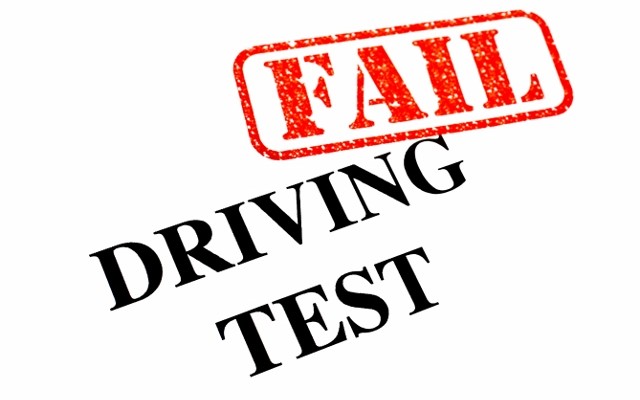
The 4 Most Common Driver’s Licence Test Fails (and How to Avoid Them)
Are you getting ready to take your driver’s licence test to become legal on the road? As you already know, there are several specific challenges you’ll have to face to pass your test. And as many motorists will tell you, there are also plenty of steps where you might fail your test and need to take it again.
Have a look at our list of the 4 most common reasons people fail their driver’s licence tests. That way, you can be sure you’ll have the knowledge and skills that are required to pass without any problems.
1. Speeding During any Part of the Exam
Many new drivers – especially younger drivers – don’t take speed into consideration for their tests. They’re so preoccupied with every other aspect of the exam that speed drops to the bottom on their priority list. As you may have guessed, however, this is a big mistake.
Believe it or not, speed is the most common reason people end up failing their tests.
Maintaining a safe speed is a critically important aspect for overall driver safety. That means you need to remain aware of your speed at all times. From the car park onto the open road, keep your speed under control and within the limit at all times. Even one slip-up here could end up as a failed test.
2. Unfamiliar with Your Car’s Console Controls
Another common failure point occurs before you even head out onto the road. Your examiner will ask you to demonstrate where all the important console controls are located in your vehicle. If you can’t identify these components, you probably won’t even get a chance to show your skills on the road!
Fortunately, this step is fairly easy to master. Take some time to go through your car’s controls and verify where every essential component is located. This includes turn signals, headlight controls, hazard lights, windshield wipers and defrosters. Make sure you have no doubt in your mind where these components are located and you won’t have a problem on test day.
3. Not Checking Your Mirrors When Pulling Onto the Road
If you make it through your console verification, your next step is to get out onto the road and demonstrate your competence. However, in many cases the examiner will stop you right as you pull out from your parking space and fail you.
Why does this failure occur?
The answer to this question is simply your own failure to take precautionary measures. You have to check your mirrors and verify you are all clear to pull out onto the road. Not completing this step will likely earn you points off your test – or even failing marks. Remember, always check before you pull out from driveways, parking spots, and other areas.
4. Dangerous Driving on the Road
Finally – and probably most importantly – you need to drive safely once you’re on the road. Safe driving includes the already mentioned driving speed, safe practices for road signs and traffic lights, correct usage of turning signals and windshield wipers (if necessary), and no unsafe merging or other in-traffic behaviour. If you show any sign of dangerous or irresponsible driving, your instructor will quickly end the test with failing marks on your examination.
Safe driving doesn’t just come with experience. You need to learn all the provisions of the road before you start spending time in traffic. From there, take some time practising to make sure you feel 100% comfortable behind the wheel. That way, you won’t have any trouble driving safely during your test.
Eastern Suburbs Driving School – Your Key to Passing Your Driver’s Test
If you want to make sure that you have all the skills you’ll need to pass your test with flying colours, contact Eastern Suburbs Driving School today. Their team of experienced professionals will provide specialty training perfectly suited to help you become a better driver. From nervous beginners to learning how to drive defensively, you’ll get all the skills you need to pass your driver’s test – and become comfortable and confident out on the road.
To learn more about the school, including the current 6 classes for 5 promotion, contact Eastern Driving School today at 1300-888-082 or visit their website.
Mobile phone usage/ or not, when driving – helpful tips

Please see below helpful tips regarding new laws for mobile phone usage when driving a car in Australia, taken from Driver Training Association News Letter end 2013.
>>>>> Mobile Phone Usage/ or not, when driving a car Australia 2014 <<<<<<
Get Your Drivers Licence In Melbourne with our High Pass Rate!
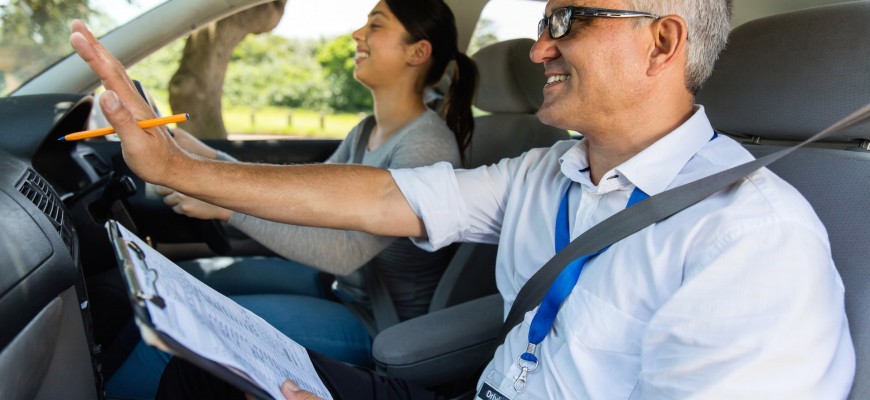
Getting your drivers licence can be a challenge – our high pass rate improves your chances dramatically! Wherever you go for your drive test, be it Burwood, Mooroolbark or anywhere else, we’ll be there to make sure you perform your best. We offer lessons and accompanying instructors for drive tests at affordable rates.
Getting to 120 hours is only part of the picture – what you really need is 120 good hours. What you learn on the roads whilst on your learner’s permit will set you up for a lifetime of driving – if the right lessons don’t sink in, your driving skills may be compromised with serious or even fatal consequences.
Eastern Suburbs Driving School boasts a high first-time pass rate for all of its students, and aims to equip its students with all the tools they need to be safe, efficient drivers. Many students choose to take their drive test in Burwood thanks to its central location and capacity. Depending on your location, we can arrange driving lessons in the area so that you’ll be prepared when the big day arrives. We also have extensive experience with Mooroolbark, another popular testing location. Get to know the streets before you head out for your drive test.
What’s more, our instructors can accompany you during your test for an additional sense of guidance and security. Prior to the test, your instructor will endeavour to get you in the right mindset for success. Remember, the drive test is the culmination of everything that you have learned during your time as a learner driver. Don’t muck it up – call Eastern Suburbs Driving School today, and find out what we can do to help you get your licence!
Driving Lessons and Safety
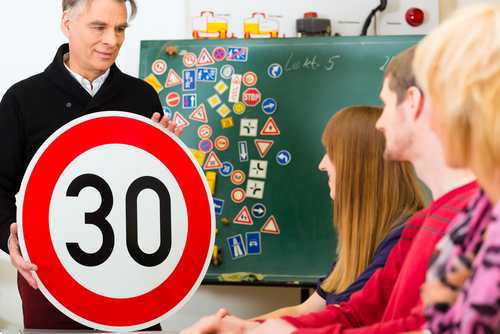
Young drivers are at the highest risk of any age group when it comes to fatal car accident statistics. Although Learner drivers are new to the roads and generally have no prior experience driving, they have the lowest fatality rate of any age group on our roads. Why do young drivers go from being innocuous to the most dangerous demographic of drivers? It’s all got to do with attitude. Young drivers relish the freedom when they finally obtain their P’s. As a consequence, there’s a lot that can go wrong.
Learning to drive without a qualified instructor is detrimental to the ability of young drivers. Though many parents are confident and often considered ‘good’ drivers, bad habits naturally accumulate with age. These are transferred to your children, possibly by accidental misinformation or lenient supervision. It’s nothing personal – we’re all human and make mistakes, after all, but don’t you want the best for your child?
Most learner drivers need some formal instruction to simply pass their Probationary Licence Test – parent supervision alone isn’t usually enough. However, to further ensure their safety on the roads, you need a patient, knowledgeable instructor who will guide your child through the ins and outs of driving. Doing so will enculture them with safe driving habits, making them less likely to take dangerous risks on the road.
Henceforth, Eastern Suburbs Driving School’s mission is to create drivers who will not only pass their P plate test, but also make safe, rational decisions on the road to protect themselves and those around them.
A Good Drive School – A Good Driver
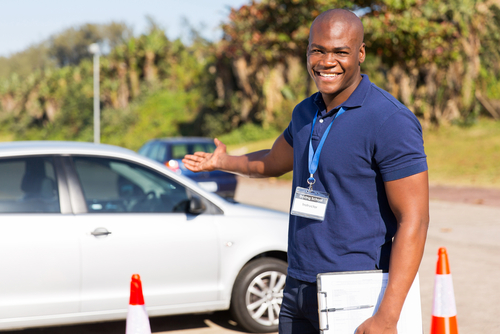
You can tell a good drive school by its instructors. A reputation for excellent driving education rests squarely on the shoulders of the teachers themselves. To ensure that the next generation of drivers are considerate on the road and capable of safe decision-making, it’s vital to supply Learners with effective, clear driving instruction whilst remaining patient and alert to any possible problems along the way.
A good drive school selects only the best instructors in their field, with a significant wealth of experience. They must be skillful educators and know the rules of the road inside-out.It’s their overriding goal to ensure that their students receive the best possible chance of passing their drive test and becoming a safe, skilled driver.
There are a few crucial skills to look for when selecting a top-notch instructor. Patience is an essential virtue. Many young drivers make mistakes when they start out, and it’s important to build their confidence despite this. Driving instructors need to foster a good relationship with their students during their driving lessons to make sure that the learning experience is ingrained.
To obtain their probationary licence, or ‘P-plates’, a learner must be able to assure their assessor that they know how to make appropriate decisions on the road and that they abide by traffic laws. A driving school such as ESDS will cover all the bases for the learner driver, giving them the skills they need to pass their P-plate drive test.
A reputable drive school is based on a solid foundation of professional instructors. Book with us, and you can’t go wrong!
More For Parents Of Young Drivers
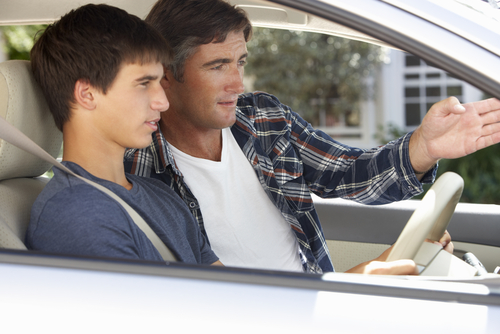
It’s essential for young learner drivers to get independent driving experience outside of their driving lessons. Indeed, most of their 120 hours will be made up of this experience, and the way that you drive with you child will hence affect them most. Our driving coaches impart valuable techniques, but unfortunately a lesson doesn’t go for 120 hours! There are a few things you can do while driving with your child that will help them maintain and practice the techniques developed during their lessons.
First and foremost, brush up on the road rules. Though most of us have been driving for many years, we’re often sketchy when it comes to the actual rules of the road. This fact shows up in our driving, and carries over to our children whose ignorance can have dangerous consequences. We recommend that you read ‘The Road To Solo Driving Handbook’ on the VicRoads website. Thus, if your child has any questions for you as a supervising driver, you can inform them correctly.
Another idea is to communicate with your child’s driving instructor. Our driving instructors are very friendly and personable, and are more than happy to answer any queries you may have about the progress of your child’s driving. They can also help you find deficiencies in your own driving style, and recommend ways of dealing with these so that you child doesn’t pick them up.
Parents play a role in their child’s driving just as important as that of their driving instructor. By assuming the duties of a supervising driver, you cease to become simply a passenger and become highly involved in you child’s driving. It’s important that you know the rules and be wary of passing on poor driving habits. Do this, and what your child learns in his or her lesson will stick and be well worth the investment. Call us today to find out more.
Interesting Facts — Did you Know?

The ADTA attended the Australian College of Road Safety Conference in Melbourne in September and obtained some interesting information.
For instance……
- Australia is now outside the top ten OECD countries for road fatalities. The safest countries are Sweden, The Netherlands and The United Kingdom.
- By 2020 road deaths will be the third most common cause of death
- 10% of drivers are involved in 50% of crashes
- Fatigue contributes to 20% of crashes
- 90% of crashes are due to the behaviour / performance of the driver as opposed to driving conditions, vehicle malfunction or road structures.
- A teenage driver travelling with a teenage passenger is 50% more likely to be involved in a crash.
- Ten years ago there was only 5 one star ANCAP rated cars available. Now three quarters of new cars have 4 or 5 stars.
- A 2 star car has double the accident / injury risk of a 5 star car.
- Probationary drivers would be 80% safer if they drove 5 star cars, which would equate to 15% less road fatalities.
- Wire rope barriers and bitumen on the side of roads with ripple strips lead to a 60%-90% decrease in serious injuries and fatalities.
- Sweden has a default speed limit of 70kmph, compared with ours which is 100kmph
- {Information provided by Australian Driver Trainers Association {Vic} Inc.
Lessons for the Long Term

Too many learner drivers tend to spend the duration of their permit with one goal above all else – passing the drive test and getting their probationary licence. While this may seem self-evident at first, we want to remind learners that getting their licence is actually only secondary – the main aim of learning to drive is just that, learning to drive, safely and confidently.
Anyone with enough time can get the required 120 hours. What distinguishes good drivers from bad ones is the quality of those hours. If a learner spends all their time picking up bad driving habits from their supervisors, driving in a small range of conditions and ignoring the rules of the road, they are more likely to have serious accidents and engage in ‘hooning behaviour’.
At ESDS, we focus on equipping the learner with the skills that they need to drive safely and confidently in the long run, not just well enough to get their licence. We believe that driver education leads to greater safety for everyone on our roads, and we do all we can to facilitate it.
We provide lessons at competitive rates with competent instructors. All of our instructors are patient and equipped to handle learners of any skill level. We highly recommend driving lessons to improve the quality of the learners driving, enable them to pass the probationary licence drive test and ultimately become a safe, sensible driver on the road. Give us a call to arrange your next lesson!
Driving Lessons in Winter Weather

The winter months can be the most hazardous for drivers. Heavy rain, fog and even ice and snow all pose risks on the road. Slow traffic through peak-hour rain can provoke dangerous road-rage and driving can get ever-more aggressive at this time of the year. It’s important that learner drivers learn how to manage these risks effectively and negotiate difficult conditions safely and confidently.
There’s no time like winter to start with professional driving lessons. With ESDS, a professional instructor is there to guide learners through every aspect of driving, including parking techniques, road rules, navigation, road courtesy and, most importantly, road safety. In difficult driving conditions, it’s easy for inexperienced driver to panic. This unfortunately increases their risk of having an accident. Driving lessons builds a learner driver’s confidence and enables them to make sound decisions no matter what the conditions are like.
Our instructors will guide learners through situations particular to winter road conditions, should they arise. For example, when do you use your high-beams (fog lamps)? How fast should you go in the wet? How do you anticipate what other drivers will do in low light conditions? What will cause you to lose control of the car? All of these are important skills, not only for passing the drive test, but also for your safety in the future. Call us today to arrange your driving lesson.
Turning Arrows

Turning arrows can be tricky for someone who is just learning to drive. Though they may seem straightforward to experienced drivers, there are actually many turning rules that learner drivers may not be aware of.
Take, for example, turning lanes. If you are in the leftmost turning lane, you may turn into the left or middle lanes, but not the right lane. If you are in the right lane, you may ONLY turn into the right lane. This can get tough when you take trucks into account – remember, if a truck is in the right turning lane, you need to take extra care not to overtake it, or else you could end up running off the road! Thankfully, trucks usually turn in the leftmost lane.
Learners should also bear in mind that the turning lane lights often go through their cycle quickly. It’s important not to dawdle when you turn, otherwise you could leave the rest of the the queue with a headache. Instead, turn as quickly as it is safe to do so. You still need to leave appropriate distance between you and the incoming car though! An ESDS Driving Instructor will teach you how to balance these finicky aspects of driving, improving your skills in the long term and giving you the best chance at passing your drive test. Book your lesson today!
Car Maintenance for Learners
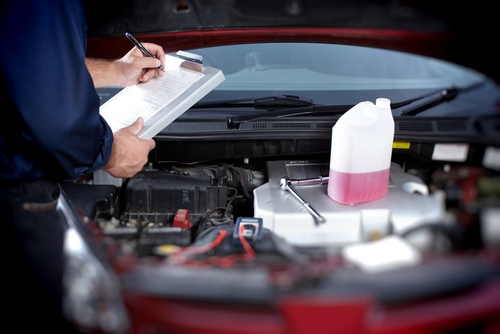
Most learner drivers need not worry about car maintenance, as they often use their parent’s cars for practice. However, proper car maintenance is an important part of car ownership and will play an important role in a driver’s financial life. It’s thus important that learner’s know the basics of keeping cars maintained as part of their driver education.
The general guidelines are to service your car every six months or so (~10,000 km), though this varies significantly depending on your driving habits and what kind of car you drive. Building a good relationship with a mechanics is very important, as it will enable you to get a good feel for what is going on with your car at any point in time. You can also save money by servicing your car yourself, though this takes time and sometimes training.
Learners can gain an insight into what car maintenance involves by accompanying the car owner to the garage at their next service. Ask questions, and get involved!
Buy 5 Driving Lessons – Get One Lesson Free
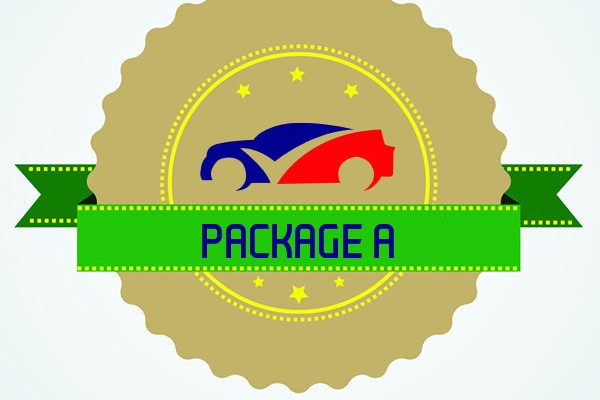
Buy 5 One Hour Driving Lessons – Get One Hour Lesson Free
TAC latest campaigns – TAC – Transport Accident Commission
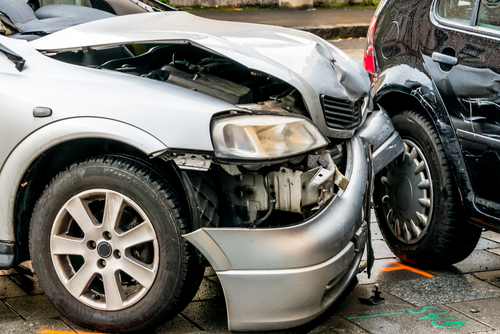
View the latest TAC road safety TV campaigns, share these with your family and friends and lets work together to make every journey a safe one
Source: TAC latest campaigns – TAC – Transport Accident Commission
Safe Driving Tips
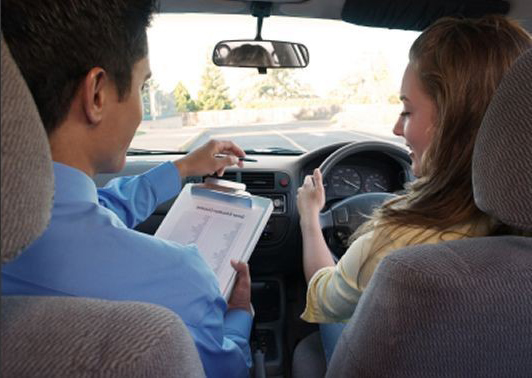
https://www.vicroads.vic.gov.au/safety-and-road-rules/driver-safety/safe-driving-tips#.VcFmEQzX-4Q.facebook
Fatal Distraction
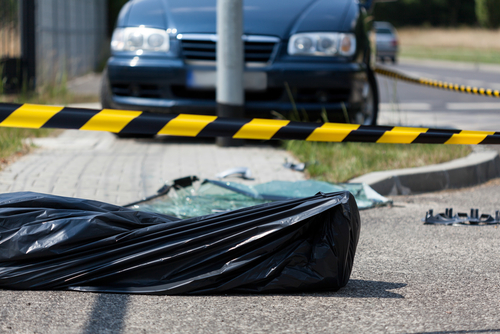
The Fatal Distraction Symposium was held recently in Melbourne as part of Trauma Week 2015. The event was hosted by the Royal Australasian College of Surgeons. The Symposium explored the correlation between distractions by all road users and the epidemic of road trauma and we provide a summary of some of the presentations here for your information. Thanks to Don Gillies (ADTAV member) who provided this information. Part 2 of this article will be included in the Jan/Feb edition of The Instructor. What is Distraction? Driving is an all-encompassing activity that includes vehicle control, route finding, route following, velocity control, collision avoidance, rule compliance, vehicle monitoring etc. Driver distraction is defined as the diversion of attention towards a competing activity from activities critical for safe driving which may then result in inattention. A key element is that the distraction may or may not be driving related, and that distraction and inattention can be varied. Some examples can be: ? Restricted or affected attention eg tired and dozy ? Incorrectly prioritised attention eg taking too long for a head check ? Neglected attention eg not looking into mirrors at all ? Cursory attention eg insufficient mirror check ? Diverted attention (non-driving related) eg disruptive passenger or changing CD ? Diverted attention (driving related) eg low fuel lamp on or changing mirror settings whilst moving What affect these have on the outcome of a situation can depend on: ? The driver ? The complexity of the task being undertaken at the time eg bends, straight road etc ? The competing task ? The capacity of that driver to self-regulate Trauma Registry Data A statistical study of national road trauma over recent years presented a surprising finding, which has significant relevance to our driver education role – mobile phone usage is only the 3rd highest cause of crash related distraction yet it gains the most media attention. In order of highest to lowest the causes of crash related distraction are passengers; vehicle systems; mobile phones/electronic devices; CDs and radio distraction; and animals. TAC Distractions Campaign The TAC Distractions Campaign was presented and discussed. It was acknowledged that people will make mistakes, even when not deliberately taking risks. During driving there is so much competition for the driver’s attention from both outside and inside the vehicle, it takes a lot to remain suitably focussed. The four pillars of road safety were presented – safer roads, safer speeds, safer vehicles and safer people. The responsibility for managing those pillars is shared amongst governments, law enforcement, the corporate world, the individual and the community at large. With everyone aware of their responsibilities and therefore managing what they can control we should see a reduction in trauma.
Driving Lesson Gift Vouchers

A Great Gift Idea for Learner Drivers
What would be better to help your learner driver on the way to the120 hour goal than a Gift Voucher from Eastern Suburbs Driving School? Gift vouchers are available in any denominations and or value that suits your budget
The Eastern Suburbs Driving School Gift Vouchers do not have a use by date, so they can be used to suit the individual learner needs. Payment is easy Cash, Credit Card, EFT, Cheque
Give us a call on 1300 888 082 and we will solve your gift giving for you.
Value of Refresher Lessons for Senior Drivers
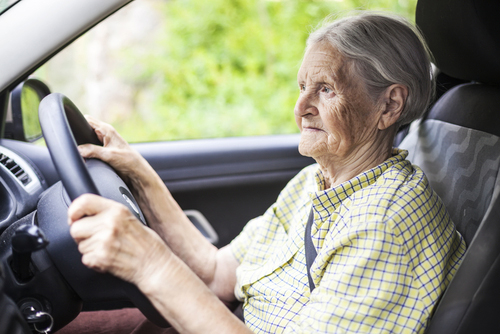
Driving is important for elderly people as it enables them to keep their independence. This is vital as it enables them to visit friends and family and live their life the way they choose.
Statistically senior drivers cause fewer accidents than younger drivers as they often avoid driving in situations they don’t feel confident in (at night, busy roads, etc.)
Like a lot of skills, driving is a skill that should be continually improved and practiced on a regular basis.
A lot of senior drivers choose to freshen up their driving skills by taking refresher lessons. These refresher lessons help to show senior drivers how to adjust their driving to suit their weaker vision and slower reflexes.
Issues Elderly Drivers Face
It is important to remember that people age in different ways, and it is not age in itself that affects someone’s driving ability but the health conditions that often go hand in hand with old age.
Eyesight Deterioration
The muscles that control the dilation of our pupils become less responsive as we reach old age which can make it a lot harder for us to see in the dark.
As well as a change to the muscles that control our pupil dilation our pupils also become smaller with age which can make it harder for us to see in the dark. A lot of senior drivers choose to avoid night time driving for this reason.
Our vision can cause other problems as we age as we will find the glare of the sun more intense which will reduce or peripheral vision. Light-responsive sunglasses can enable us to carry on driving in these situations.
Hearing Deterioration
Hearing loss can be dangerous when your on the road as it may prevent you from hearing important sounds like the high-pitched tones from emergency response vehicles. It can also prevent you from hearing other warning sounds particularly in situations where there is a lot of background noise.
Reaction Times
Stiffness or pain in joints or muscles can make it difficult for senior drivers to react quickly in an emergency. They can also be affected by their ability to process information quickly and react accordingly. Reaction times can be improved by:
- Increasing following distance
- Limiting left turns
- Eliminate distractions inside the vehicle
- Plan your route
- Avoid busy roads and congested traffic
- Talk to your doctor about your medication
- Take frequent breaks
Fatigue
As we age, we are more likely to suffer from fatigue so elderly drivers should avoid long journeys, especially after alcohol or eating a heavy meal.
Medication Side Effects
Medications often come with side effects which can affect your driving ability.
Frailty
As people age they become frail which can lead to them suffering more serious injuries in accidents.
Benefits of Refresher Lessons
Refresher lessons help you to iron out any bad habits you have picked up over the years, boost your confidence behind the wheel and teach you new skills.
Confidence
If you have taken a long break from driving, you may find you have lost your confidence in your driving ability. Refresher courses are a great way of boosting your confidence on the road.
A lot of road accidents are caused because of bad habits, simple mistakes or a gap in the driver’s knowledge on how to react in that kind of situation.
Environment
When you are in better control of your car you will use less fuel, which reduces the amount of pollution. It will also save you money as you will need to replace parts less often, and the wear and tear on items such as tires will be reduced.
Top 10 Tips to Pass Your Driving Test On Your First Attempt

If you’re looking for some driving test tips to help you pass your driving test the first time, then you have come to the right place! These driving test tips cover the most important things that you should keep in mind before and during your driving test so you’ll see the best results from your efforts.
- Get lots of practice : You can practice in places like empty parking lots with a trusted adult to help you learn the best techniques.
- Get comfortable with three point turns and parking : Practice both of these skills until they’re not a challenge for you at all, because you will be tested on them!
- Get comfortable with your testing area : After scheduling your test, find the area you will be tested in and drive around there for awhile.
- Inspect your vehicle before you show up for the test : Your vehicle will go through an inspection before you even take the test to ensure that minimum standards are met. To avoid having your test cancelled because your car doesn’t measure up, check all the lights and tires the day before your test. Also, make sure you are familiar with all the buttons your car has, such as how to use the AC, windshield wipers, horn, hazard lights and emergency brake.
- Gather all the necessary paperwork the night before : You will be required to present, at the very least, your learner’s permit, and proof of insurance and registration on the car you will be taking the test with. So you’re not scrambling around for this paperwork the morning of the test, gather it the night before and put it all in one place where you will not forget it.
- Use a car for your test that you’ve had plenty of practice with : It takes time to get used to a new car and adjust yourself to the sensitivities of its steering wheel and brakes. There is a time and a place to get used to a new car and it is not your driving test; that is why you should use the car you learned to drive in for your test, if at all possible.
- Wear your seatbelt : Make sure to put it on as soon as you get into the car, or the person performing the test will definitely notice.
- Hold the steering wheel with both hands : The person giving you your test will make sure that your hands are positioned properly on the steering wheel and that you do not let go of the wheel throughout the duration of the test.
- Stop a reasonable distance from the car in front of you : A good general rule to go by in situations where you have to stop behind another car, such as at a red light or a stop sign, is that you should be able to see the tires of the car in front of you.
- Do not cross solid lines : This will most likely result in an automatic failure of your driving test.
By following these 10 driving test tips, you are extremely likely to pass your driving test on your first attempt. Also, make sure to get a good night’s sleep and eat before the test so you aren’t distracted by being tired or hungry!
For best driving lessons is Melbourne, click here
Go back to Home Page
Common Mistakes People Make When Driving On The Road

Unfortunately, no one is perfect and even the most experienced drivers are capable of making simple mistakes once in awhile that can lead to road accidents in Victoria. However, the way to avoid making simple mistakes people make while driving on the road is to be aware of what they are. This way, you can modify your driving techniques so you are not making them anymore.
Minimizing the mistakes you make while driving is the best way to avoid road accidents in Victoria, so in order to drive safely, you should definitely review the following most common mistakes people make while driving. This way, you can ask yourself if you are guilty of any of these and find ways to stop them from happening so frequently in your own driving.
Furthermore, being aware of these driving mistakes and avoiding them is essential if you haven’t gotten your driver’s licence yet and you are about to take your driving test in the near future. You will definitely get points off if you make any of these mistakes and, if you make enough of them, they could add up enough to not allow you to get your licence and you’ll have to take the test all over again.
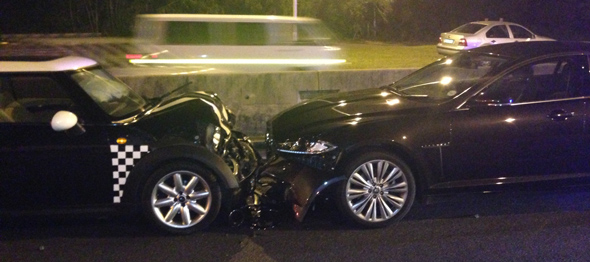
However, even if you already have your licence, it’s important to acknowledge that you’re not perfect. Look over the following common driving mistakes and ask yourself if you’re ever guilty of making them yourself!
- Distractions : Many drivers are easily susceptible to distractions such as their cell phones or talking with another passenger in the car. Things that cause you to take your eyes off of the road, even if just for a couple of seconds, can be deadly. It may not seem like it, but a few seconds leaves room for a lot to happen whiledriving fast on the highway and the consequences of sending a single text message behind the wheel of a car could be fatal. You can wait until you get to your destination—or at the very least, until you get to a red light.
- Speeding : The speed limit is set for a reason by specialists who know how to judge how quickly a car can be going in a certain area while still allotting the necessary time to respond to emergencies. Going the speed limit makes it safer for you to be able to react appropriately to any unexpected trouble you may encounter on the road.
- Following too closely : It is important that you do not follow too closely to the car in front of you. If something occurs that causes them to slam on their brakes, then you may not be able to react quickly enough to avoid rear-ending them. You want to make sure that, if you had to, there is enough space for you to stop without hitting the car in front of you.
- Failing to use turn signal or check blind spots : These are simple things that it is easy to stop doing as you get more comfortable driving, but it is important not to get that relaxed. It’s not the responsibility of other cars to stay out of your blind spot; it’s your job to check if they’re there before you turn or change lanes. It’s also not the responsibility of other drivers to anticipate before you turn or change lanes; you need to signal to let them know.
Keeping these common driving mistakes in mind can help you to avoid making them and drive safe while you are on the road to avoid getting into road accidents in Victoria!
For driving instructors, click here
Go back to Home Page
Why To Avoid Drink Driving
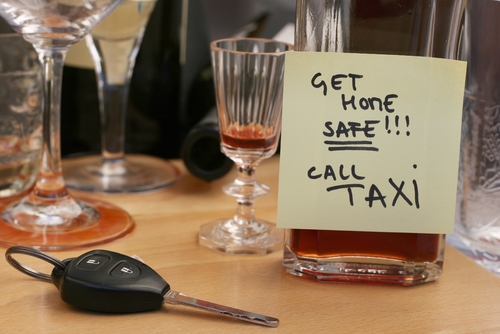
The reasons to avoid driving drink are endless. For one thing, it is extremely dangerous and you could end up severely harming someone else or even yourself if you get into an accident. It would be horrible if one bad decision defined the rest of your life because someone ended up losing his or her life as a result of your actions. Furthermore, even if you don’t get into an accident, you could still get pulled over for your driving and the rest of your life would never be the same after that mistake. Police are trained to know what to look for to spot a drink driver, so there is a high likelihood that you will get pulled over and arrested for your state of intoxication while behind the wheel.
You don’t want to end up taking someone’s life or prematurely ending your own as a result of drink driving. And although this is a much smaller drink driving penalty than death, you probably don’t think it’s worth the risk of getting your licence taken away either. This is why you should take all of the necessary precautions in order to avoid drink driving at all costs.

The following are a couple of tips that will give you ideas regarding how to stop drink driving:
- Be responsible : Before you decide to do something, ask yourself what the possible repercussions are and if they are really worth the risk. Is saving the couple of bucks you would have otherwise spent on a cab really worth losing your licence over? Or even worse, getting into a car accident, harming yourself and others, and getting arrested for driving under the influence? Cabs might be expensive, but they are definitely cheaper than the costs that will incur! Not to mention the guilt and other penaltiesinvolved as a result of your decision.
- Choose a designated driver : This is one of the best ways to avoid drinkdriving, because it removes the need (or ability) for it. If everyone in your group drives to the party in one car, then only one person(presumably the designated driver) has the keys. So long as the designated driver keeps to his or her word and does not drink any alcohol, there won’t be a problem.
- Call a Cab : No one is perfect, and sometimes your designated driver ends up slipping. This is the time that you should call a cab or arrange some other form of transportation.
- Hide keys : If you have a friend who you are afraid might attempt to get behind the wheel while intoxicated, do not be afraid to take his or her keys. You are doing the right thing.
- Stop drinking alcoholic beverages long before you leave the party : Switch to water or soda around two hours before the party ends. This will give you a chance to hopefully be thinking clearly enough to make a rational decision about how you are going to get home.
You should always keep in mind the above tips about avoiding drink driving when you are going to consume any alcoholic beverages; they could end up saving lives.
For cheap driving lessons in Melbourne, Click here
Go back to Home Page
Drink Driving

THOUSANDS of Victorians found boozed-up behind the wheel will have their cars impounded as police roll out harsh new drink-driving penalties.
An extra 67 drivers a week are expected to have their cars confiscated after police launch an unprecedented crackdown on first-time offenders who blow over .10.
Vehicles, even if not owned by the driver, will be impounded and drivers will have their licences cancelled for 10 months.
Being caught will also be a hip-pocket hit with drunk drivers handed a $627 fine and any towing costs.
EDITORIAL: A LAW TO CUT THE CARNAGE
Victoria Police Assistant Commissioner Robert Hill warned Victorians not to get behind the wheel after drinking.
“There is no place in our community for drivers who take risks with their life and the lives of others. This legislation will ensure these irresponsible drivers are removed from our roads.
“Drinking and driving are two behaviours that just don’t mix,” he said. “If you are going to drink then don’t drive — plan ahead, catch public transport, organise a designated driver or call a taxi.”
In 2013, up to 3750 first-time offenders were caught by police with a reading above 0.10.
Based on those figures police predicted more than 3500 more people will have cars impounded every year.
All highway patrol areas will require vehicles to be impounded except for Nunawading and Brimbank, which give the option of clamping cars under an immobilisation pilot.
The new rules are part of Road Safety Amendment Bill 2014 dubbed the “cocktail laws” which aimed at getting motorists who drive while on drink and drugs, off Victorian roads. It passed the Victorian Parliament with bipartisan support last year and will take effect on August 1.
Police Minister Wade Noonan warned boozers faced more penalties than ever.
“Anyone driving with a blood alcohol reading of .10 or higher is a danger to themselves and others, regardless of whether it is their first offence,’’ he said.
“Victorians deserve to be safe on our roads without having to worry about boozed-up drivers.
“People who drive with that much alcohol in their system are idiots, plain and simple.’’
Boozy drivers are also facing a higher chance of being caught after the Andrews Government announced 10 new drink and drug buses will be hitting the streets in a new $15 million safety scheme.
Meanwhile, revenue from traffic and red light camera fines will be funnelled into fixing Victorian roads under a new law being drafted by the Government.
The move will see every dollar from bad drivers going into the Better Roads Victoria Trust Account to upgrade roads and fix level crossings.
VicRoads and Victoria police are being consulted by staff from the Department of Economic Development, Jobs, Transport and Resources who were given the green light to begin work on the bill.
Premier Daniel Andrews announced the move during his election campaign.
Legislation is needed because the current fund created under the Business Franchise (petroleum products) Act 1979 is inadequate.
The new law will see millions poured into the trust which will then be boosted to $1 billion by the Government.
alex.white@news.com.au
Driving Fatigue.

Fatigue results in thousands of crashes every year.
What do we mean by “fatigue” You are fatigured when you become tired and can’t concentrate on your driving. You may even have a micro-sleep* or fall asleep at the wheel.
Micro- sleeps {nodding off} typically lasts between 2 and 20 seconds – but if you are travelling at 100 /h, in one second the car will have gone 28 m without you being in control.
How do we know?
Unlike alcohol-related crashes, there are no simple tests to determine if fatigue was a cause in a crash.
Investigators suspect fatigue as a cause when;
> The crash occurs late at night, early in the morning or late in the afternoon,
> A single car has run off the roadway.
> Nothing indicates the driver tried to avoid the crash {e.g. no skidmarks}
There are many warning signs for fatigue. A combination of any of the following signals that the driver is becoming fatigured and needs to take a break:
> yawning
> eyes feeling sore or heavy
> vision starting to blur
> start seeing things
> daydreaming and not concentrating
> becoming impatient
> feeling hungry or thirsty
> reactions seem slow
> feeling stiff or cramped
> driving speed creeps up or down
> starting to make poor gear changes
> wandering over the centre line or onto the road edge
What has research told us about fatigue?
Everybody needs sleep and we all have our own patterns of sleepiness and wakefulness. Fatigue {sometimes referred to as drowsiness or sleepiness} causes crashes because it slows down the driver’s reaction times and affects their scanning abilities and information processing skills.
> Although the need for sleep varies among individuals, sleeping eight hour in 24-hour period is common.
> The effect of sleep loss builds up. Regularly losing 1 to 2 hours sleep a night can create a “sleep debt” and lead to chronic sleepiness over time – and cause involuntary micro-sleeps.
> Just being in bed doesn’t mean a person has had enough sleep. Disrupted sleep has the same effect as lack of sleep. Illness, noise, activity, lights, etc, can interrupt and reduce the amount and quality of sleep.
Fatigue can strike any driver, but you are at greater risk as a young person if you:
> Combine heavy study or work with leisure and late night socialising.
> Change your sleep patterns and reduce night time sleep.
> Drink alcohol and or use other drugs.
Here are some ideas to minimise fatigue when you are driving:
> Plan to get sufficient and regular sleep. Most people need around 7-8 hours in every 24-hour period. Making do with less sleep will affect your driving.
> If you are sleepy or tired, don’t drink even small amounts of alcohol. Alcohol acts as a depressant on the central nervous system and can make you even more tired or less alert.
> Try not to drive during your normal sleeping hours. Your body works in a rhythm or pattern and when you upset this rhythm it can badly affect you.
> If possible take a taxi or a lift with another person rather than driving during your normal sleep times. {you can always pick your car up in the morning if you have to .
> Think about what activity you were doing before the drive. If it was physically or mentally demanding then fatigue may “kick in” within a few minutes of beginning the trip.
> Know the signs that indicate you are tired.
> If you are fatigued , you must stop driving. Let a passenger drive or take a short “power nap” before continuing with the trip.
> Fatigue can set in even on short local trips. If there is no alternative to travelling a short distance when you are tired then make sure you make your journey as uncomfortable as possible – too cold, noisy or windy for example. If this works it won’t work for long and if it doesn’t work you are putting yourself at great risk and you should stop.
Source: Road to Solo Driving
Safety and Reliability

ESDS is a family-run business that you can trust. We’ve been teaching young drivers sound road skills for years, and that’s why we believe that we have some of the best experience in the business. We pride ourselves on providing a safe learning environment that encourages mature and responsible driving, as well as courtesy on the road. Driving with a professional instructor is the best way to develop proper awareness of the road rules, and ESDS can provide the reliability and reassurance essential for learning these vital skills.
Once you book an appointment with us, either online or by phone, one of instructors will spend time assessing your driving ability and any potential areas for improvement. He or she will then guide you through the driving process, giving feedback and suggestions to help you improve. Our rates include pick-up and drop-off from and to your desired location, so lessons with us are convenient and require a minimum of fuss. Before your lesson, it’s a great idea to browse our website and look through our resources for learner drivers – our FAQ section, for example, has some very useful tips and tricks. Browse around, and book your lesson today!
What is the two second rule ?

The two second rule is about the following distance behind the vehicle in front.
The following distance is the space or gap between you and the vehicle in front.
You must keep your vehicle a safe distance from any vehicle in front of you. A safe distance should be enough to allow time to slow down and avoid trouble.
You should be at least two seconds behind the vehicle in front. You can check this by a simple test:
>> Focus on a marker in the distance such as a signpost or tree and note when the vehicle in front passes the marker, then count the number of seconds before your vehicle passes the same marker. Ask your supervising driver to also do this and compare your results.
If your count is not at least two seconds then you are to close.
At least two seconds of time and the distance this represents under ideal driving conditions are necessary to give you time to react to any changes which may happen.
Often, you may need more than two seconds,
This includes:
>> when visibility is poor
>> if conditions are dark
>> if conditions are wet or slippery
>> when you have a heavy load
>> when the road is unmade
You need to develop your judgement skills about what distance at different speeds represents two seconds. This skill will only come with lots of supervised driving experience.
But remember , under any conditions that are less than ideal, a longer gap is recommrnded.
Souce: The Road to Solo Driving
Graduated Licensing System systems implementation causes delays

As of today Vic Roads are not taking any bookings for July Tests until may 2008.
This makes it very difficult for driving instructors and clients alike to plan ahead and disrupts driving school business and the public at large.
Test bookings for June 2008 are all ready full, this has been caused by the new Graduated Licensing System systems implementation as of the 1st of July 2008.

